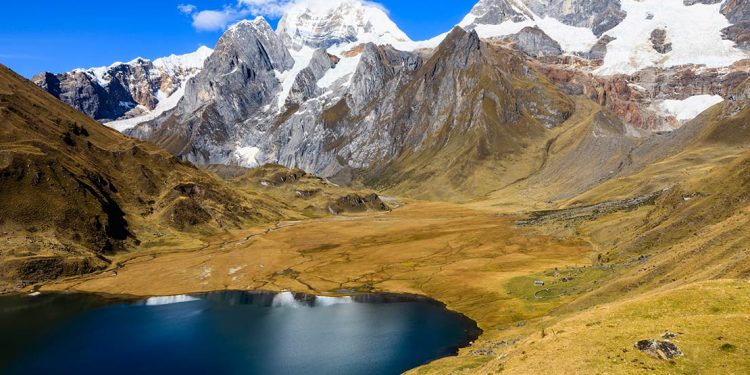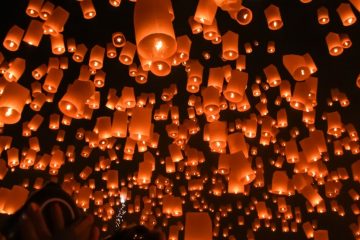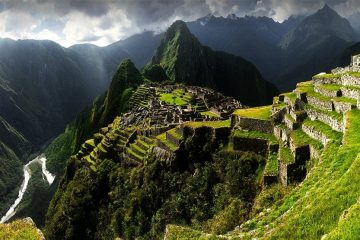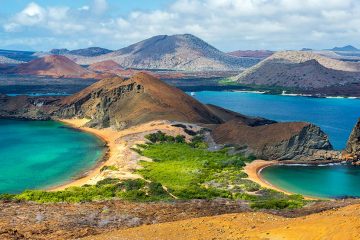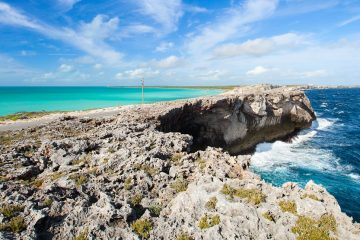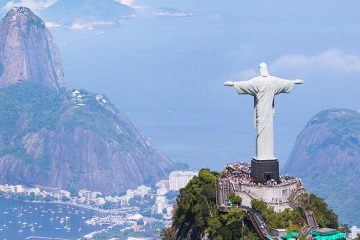The Wonders of Northern Peru No One Is Telling You About
Traveling Beyond Machu Picchu and the Inca Trail
Anyone with an internet connection has seen photos of Machu Picchu: the imposing crags rising out of the morning mist, the citadel looking anything but ruined, and a beaming tourist posing in front of it all. It is without a doubt a magnificent sight, one thousands of people make the pilgrimage to see every year.
In their determination to set foot on the Inca Trail however, most of these pilgrims miss the endless wealth of things to see north of Lima.
Peru is as colorful, diverse and exciting as any of the woven blankets and bags sold in the extraordinary textile markets. From the north to the south, Peru’s borders wrap around some of the Americas’ most historic sites, impressive mountains and laid-back surf spots. And don’t miss out on venturing into the jungle for an unforgettable rainforest vacation.
From the Pacific Coast to the Andes to the Amazon, Peru has it all.
Heading North
Ditching the crowded and well-traveled south of the country and escaping to Northern Peru will take you through all three geographic regions, with ample opportunities to enjoy the coast, mountains and jungle.
From Lima, a good first stop on any Northern Peru itinerary is Huaraz. Set among one of the greatest mountain ranges in the world, this rugged little town is a mecca for hikers, mountaineers and nature lovers.
An ideal jumping-off point for Andean exploration, Huaraz is the perfect place from which to plan an expedition into the longest and second largest continental mountain range in the world. The Andes make a valiant effort to reach the sky, cradling glaciers, valleys and lakes in their rocky arms.
Pitching a tent in the shadow of these mountains, underneath a billion stars, is unlike anything else you are likely to experience in a lifetime.
For the beach bums, surfers and anyone looking for a mellow vibe, Huanchaco awaits. A sun-baked fishing village, the tradition of fishing from reed-boats here dates back to 500 BC. The canoe-shaped boats still line up against the waterfront, interspersed with surfboards and lounging sun-seekers.
It’s easy to join in on the surfing action, with plenty of lessons and waves for beginners and experts alike. Artisans and street food vendors peddle their wares along the pier into the evening, making it the ideal place to stroll while watching the sun set into the Pacific.
Follow the Pan-American Highway up the coast and you will end up in Mancora. Mancora has more of a resort feel than Huanchaco, with more upscale restaurants and significantly rowdier backpacker hostels.
The long golden beach is populated with umbrellas instead of surfboards, but the vibe is still ultimately relaxed and relaxing. Year-round sun, surf and nightlife make this a popular spot for Peruvian holidaymakers as well as international visitors. If there is one thing you do here, make sure you eat mangoes from one of the fruit vendors — it may just change your life.
Back to the Mountains
Next, to revive your heart rate after the coast and to get a real taste of adventure, head back to the mountains. Chachapoyas is an attractive town at the center of seemingly unlimited attractions. There are the Karijia sarcophagus, the cliff tombs of Revash and the world’s fourth highest waterfalls, the Gocta Waterfalls.
Then there is Kuelap, an ancient stone city and star attraction of the north. Older than Machu Picchu, pre-dating the Incas, Kuelap is sprawled over the top of a mountain and shrouded in mist as all good ruins are.
Built by the Chachapoyas people around 600 AD, Kuelap was a city by standards at the time, with more than 400 houses within the walls. Constructed with nearly 10 times the volume of stone used in the Giza pyramid, and at almost half a mile in length, Kuelap is possibly the largest archaeological structure in the Americas.
The best part about Kuelap is scarcely any restoration work has been done at the site. This means that when you are wandering among the bromeliads, ruins and roaming llamas, discovering real human bones behind stone walls, enjoying views across the surrounding valleys, you will get a taste of what it feels like to be a bona fide explorer.
This guide will help you plan your trip to some of the best lantern festivals around the world. Witness this stunning sight from China to the US and more!
Exploring the Jungle
From Chachapoyas, push on further east and you will eventually drop into the steamy realm of the Amazon jungle. Here you can get far, far, away from the beaten track, quite literally.
Iquitos, in the far east of Peru, is the largest city in the world inaccessible by road. The only options to get there are either by air or by negotiating a journey on one of the boats heading upriver. Not for the faint of heart, the river journey takes three days or more, depending on where you set off from.
Be prepared for an endless unrolling of the same river scenery, plenty of mosquitoes, basic food and a completely unforgettable journey. This far into the wild, reality starts to seem relative. Between psychedelic Ayahuasca, the floating market of Belen and some of the world’s most exotic wildlife, you will definitely get a “not in Kansas anymore” feeling.
The list of things to do and places you absolutely have to see goes on and on. Take however much time you thought you would need in Peru, and double it. Then add a few more weeks for good measure.
The sheer scale of this country, the depth of the history and the amount of things to do will pull you in and keep you there until your tourist visa is up. The greatest danger in this country is that you will never want to leave.

